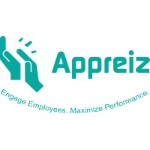In the ever-evolving landscape of modern workplaces, there’s one constant that remains an essential element for success: the people. Your employees are the heartbeat of your organization, driving innovation, productivity, and ultimately, your bottom line. It’s no secret that a motivated, engaged, and appreciated workforce can work wonders. They don’t just meet expectations; they exceed them. They don’t just do their jobs; they passionately embrace their roles. They don’t just show up; they bring their best selves to work every day.
So, how do you ensure that your employees feel valued and motivated? The answer lies in a powerful yet often underutilized tool: the employee recognition and rewards program. Recognizing and appreciating your team members’ efforts can make a world of difference in their job satisfaction, engagement, and overall performance. However, as organizations grow and workforces become more diverse and dispersed, managing recognition programs manually becomes increasingly challenging. That’s where employee recognition software steps in as a game-changer.
In this comprehensive guide, we’ll embark on a journey into the dynamic realm of employee recognition software. We’ll explore what it is, how it works, and the remarkable benefits it brings to the table. We’ll also introduce you to some of the top-notch tools available to streamline recognition efforts within your organization. So, if you’re ready to unlock the potential of your workforce, boost morale, and supercharge productivity, let’s dive into the world of the best employee recognition software around.

What is Employee Recognition Software?
In today’s fast-paced and dynamic work environment, where remote work, flexible schedules, and diverse teams are the norm, maintaining a cohesive and motivated workforce can be a significant challenge. Organizations are continually searching for effective ways to not only attract top talent but also retain and engage their existing employees. This is where employee recognition software steps in as a transformative and invaluable tool in the modern workplace.
At its core, employee recognition software is a specialized digital solution meticulously crafted to streamline and enhance the process of acknowledging and rewarding employees for their contributions and achievements within an organization. It acts as a bridge, connecting the often-disparate elements of recognition, appreciation, and performance management. This software isn’t just a technological convenience; it’s a strategic approach to nurturing a positive and motivating workplace culture.
Employee recognition software: Elevate workplace morale, boost engagement, and drive productivity with the art of appreciation. Unlock its transformative potential for a motivated and engaged workforce, and watch your organization thrive!
Let’s break down the intricate layers of what employee recognition software truly represents:
Automation and Streamlining
Imagine the intricacies of managing employee recognition programs manually in a large organization. The logistics alone can be overwhelming. Employee recognition software acts as a digital wizard, automating many of the processes involved. It takes the administrative burden off HR departments and managers, allowing them to focus on what truly matters: fostering a culture of appreciation.
Centralized Recognition Hub
One of the fundamental features of this software is its ability to provide a centralized platform for employee accomplishments. It is rewards platform that’s the beating heart of recognition efforts, where employees and managers come together to acknowledge and celebrate achievements. This centralized hub ensures that recognition is not fragmented or isolated but instead becomes an integral part of the organization’s daily interactions.
Customization and Personalization
Recognition should never be a one-size-fits-all endeavor. Employee recognition software recognizes this and offers a plethora of customization options. From personalized messages that convey genuine appreciation to the use of badges and even the inclusion of small rewards like gift cards, the software empowers users to tailor their own recognition messages to suit the recipient and the occasion.
Enhanced Visibility
Effective recognition is not a hidden affair; it’s a public celebration of achievements. Employee recognition software ensures that recognition moments are visible to the entire team or department. It creates a sense of transparency and inclusivity, allowing everyone to share in the joy of their colleagues reward employees’ successes.
Powerful Analytics
In the age of data-driven decision-making, the right employee recognition platform or software doesn’t fall short. It provides organizations with valuable insights through robust analytics. These analytics enable managers to track trends in recognition activities, identify top performers, and, most importantly, measure the impact of their recognition programs. This data-driven approach transforms best employee surveys and recognition platform from a well-intentioned effort into a strategic initiative.
Integration with Reward Systems
Some employee recognition software goes a step beyond recognition itself by seamlessly integrating with reward points and systems. This feature allows employees to accumulate points or receive tangible rewards based on the recognition they receive. Such integration adds a layer of gamification to the workplace, further motivating employees to excel.
Culture of Appreciation
Ultimately, what sets employee recognition software apart is its role in nurturing a culture of appreciation. It transcends the realm of technology and becomes a catalyst for cultural transformation. When an employee recognition app becomes a habit, deeply ingrained in the organization’s DNA, it shapes the way employees perceive their workplace, their colleagues, and their own roles within the organization.
In essence, employee recognition software is not merely a tool; it’s a strategic enabler of positive workplace dynamics. It’s the digital hand that reaches out to employees, letting them know that their efforts are not just noticed but genuinely valued. It’s the engine that drives engagement, motivation, and job satisfaction. It’s the guardian of a positive work culture, where employees recognize they are not just contributors but active participants in the organization’s success story.
The significance of employee recognition software cannot be overstated in the contemporary world of work. It’s the bridge that connects organizations with their employees on a deeper, more meaningful level. It transforms the mundane into the extraordinary, the ordinary into the exceptional, and the workplace into a thriving ecosystem of appreciation and achievement. In the sections to come, we’ll explore how this transformative tool operates, the numerous benefits it brings to organizations, and the top software solutions available to make the best employee recognition platforms a seamless part of your workplace culture.
Key points in this section:
Employee recognition software automates and streamlines the recognition process.
It provides a centralized platform for acknowledging and rewarding employees.
The software aims to create a culture of appreciation and motivation within organizations.

How Does Employee Recognition Software Work?
Understanding how employee recognition software operates is like peeling back the layers of an intricate puzzle. It’s a journey through the digital landscape of appreciation, reward platform real time recognition, and motivation. In this section, we’ll take a closer look at the inner workings of this remarkable tool, breaking down the process step by step.
Recognition Moments Initiation:
The journey to employee nominations begins when an employee or manager decides to initiate a recognition moment. This moment can be triggered by various factors, such as a job well done, achieving a significant milestone, demonstrating exceptional skills, or simply going the extra mile to help a colleague. The initiation of recognition moments is the cornerstone of employee recognition software, as it empowers everyone within the organization to actively participate in the culture of appreciation.
Customization and Personalization:
Recognition should be a deeply personal and meaningful experience. Employee recognition software understands this principle and provides users with a wide array of customization global reward options. When initiating a recognition moment, users can add their personal touch. This can include heartfelt messages that convey genuine appreciation, the addition of badges or virtual tokens of recognition, and even the option to include small rewards, such as gift cards or other incentives.
Visibility and Transparency:
Recognition moments are not meant to be hidden away in digital obscurity. They are designed to be shared and celebrated. Employee recognition software ensures that these moments are highly visible within the organization. They can be displayed on newsfeeds, dashboards, or dedicated employee recognition platforms and channels, allowing colleagues and team members to see and appreciate each other’s achievements. This visibility fosters a sense of transparency and inclusivity, reinforcing the idea that recognition is a collective effort.
Analytics and Insights:
In the era of data-driven decision-making, employee recognition software is not just a tool for recognition; it’s a treasure trove of insights. The best employee recognition software collects data on recognition activities, and this data is transformed into actionable insights. Managers and HR professionals can use these insights to track trends in recognition, identify top performers, and measure the impact of their recognition programs. Analytics become the compass guiding the organization’s efforts to optimize and tailor their recognition initiatives effectively.
Integration with Reward Systems:
Some employee recognition apps and software solutions take the recognition experience to the next level by seamlessly integrating link recognition with reward systems. In these instances, recognized employees can accumulate points or receive tangible rewards based on the recognition they’ve received. This integration adds a layer of gamification to the workplace recognition app, further motivating employees to excel and actively participate in recognition activities.
Cultural Transformation:
Beyond the mechanics, employee recognition software is a catalyst for cultural transformation. It transcends the realm of technology and becomes a driving force for change. When an employee recognition and engagement platform becomes a habit, deeply ingrained in the organization’s culture, it shapes the way employees perceive their workplace, their colleagues, and their roles within the organization. It transforms the organization from a place of work into a thriving ecosystem of appreciation, achievement, and motivation.
In essence, employee recognition software is the digital conduit that facilitates, amplifies, and elevates recognition efforts within an organization. It takes a fundamental human need—the need to be appreciated and valued—and infuses it with the power of technology. It transforms employee recognition program from an occasional, ad hoc practice into a strategic, data-driven initiative that enhances morale, engagement, and productivity.
Now that we’ve uncovered the intricate workings of this transformative tool, let’s explore the wealth of benefits it brings to organizations, including improved morale, increased employee engagement, enhanced productivity, and lower turnover rates. Employee recognition software isn’t just a nice-to-have; it’s a strategic investment in your organization’s success.
Key points in this section:
Employee recognition software allows users to initiate recognition moments.
Personalization and customization options enhance the recognition experience.
Visibility ensures that recognition is shared with the entire team.
Analytics help measure the effectiveness of recognition programs.
Integration with reward systems can be a valuable feature.

Benefits of Employee Recognition Software
Employee recognition software is more than just a technological innovation; it’s a catalyst for positive change within organizations. It holds the potential to revolutionize workplace dynamics, elevate employee morale, and drive productivity to new heights. In this section, we’ll delve deeper into the multifaceted benefits that this software brings to the table, understanding how it can fundamentally transform your organization’s culture and performance.
Improved Morale and Job Satisfaction
Employee recognition software is a powerful morale booster. When employees receive recognition for their hard work and contributions, it sends a clear message: their efforts are valued and appreciated. This simple act of acknowledgment can significantly impact an individual’s perception of their own culture and role within the organization. As a result:
Employees experience a surge in job satisfaction, leading to increased overall happiness at work.
The workplace becomes a more positive and motivating environment.
A culture of appreciation takes root, fostering stronger connections between team members.
Key Takeaway: Improved morale and job satisfaction are foundational benefits of employee recognition software, creating a happier and more motivated workforce.
Increased Employee Engagement
Engagement is a hot topic in modern organizational psychology, and for a good reason. Engaged employees are not just “going through the motions”; they are emotionally invested in their work. Employee recognition software plays a pivotal role in boosting employee engagement strategy here:
Engaged employees are more likely to take initiative, solve problems, and contribute innovative ideas.
They exhibit a deeper commitment to the organization’s goals and values.
Engagement contributes to a sense of belonging and loyalty, reducing the likelihood of turnover.
Key Takeaway: Increased employee engagement is a direct outcome of the employee feedback and recognition software, driving proactive, committed, and innovative behaviors among employees.
Enhanced Productivity
The positive impact of recognition on productivity cannot be overstated. Recognized employees tend to be more motivated and focused on their tasks:
They take pride in their work and strive for excellence.
The acknowledgment of their contributions serves as a continuous source of motivation.
Increased productivity directly contributes to better overall organizational performance.
Key Takeaway: Enhanced productivity is a natural consequence of employee recognition, leading to improved organizational outcomes.
Lower Turnover Rates
Employee turnover can be a significant drain on an organization’s resources. Recruitment, training, and onboarding new employees are costly endeavors how many employees. Employee recognition software acts as a retention shield:
When employees feel valued and appreciated, they are less likely to seek opportunities elsewhere.
Lower turnover rates translate into cost savings and greater organizational stability.
Retaining experienced employees benefits the organization’s performance and knowledge retention.
Key Takeaway: Lower turnover rates are a direct result of employee recognition software, saving organizations time and money while maintaining workforce continuity.
Strengthened Company Culture
Company culture is the DNA of an organization. Employee recognition software contributes to the cultivation of a positive and inclusive and positive company culture by:
It reinforces the organization’s values and mission, aligning employees with its objectives.
A culture of appreciation becomes an integral part of the organizational identity.
Employees feel a sense of pride and belonging, leading to greater loyalty and commitment.
Key Takeaway: Employee recognition software strengthens the organization’s company culture, recognizing employees and fostering a cohesive and collaborative work environment and positive workplace environment.
Data-Driven Insights
In the age of data, insights are invaluable. Employee recognition software provides organizations with a wealth of data:
Analytics help measure the impact of recognition programs, enabling continuous improvement.
Data can identify top performers and areas where recognition is needed.
Informed decisions can be made to optimize recognition initiatives for maximum effectiveness.
Key Takeaway: Data-driven insights from employee recognition software empower organizations to refine and enhance their recognition programs, ensuring they remain aligned with employee needs, business objectives and organizational goals.
Positive Ripple Effect
The benefits of employee recognition software don’t stop at the individual level. They create a positive ripple effect that extends throughout the organization:
As employees experience increased job satisfaction and engagement, they become advocates for recognition and positive workplace culture.
The culture of appreciation spreads across teams and departments, creating a harmonious and motivating work environment.
Ultimately, a positive organizational culture attracts and retains top talent, further enhancing the organization’s competitiveness.
Key Takeaway: The positive impact of employee recognition software extends beyond individuals, shaping the entire organizational landscape.
In conclusion, employee recognition software isn’t just a tool; it’s a strategic investment in your organization’s future. It has the power to transform workplaces, boost morale, and drive productivity to unprecedented heights. By nurturing a culture of appreciation, recognition software fosters stronger connections among employees, enhances their job satisfaction, and creates an engaged and motivated workforce.
The benefits are clear: improved morale, increased employee engagement, enhanced productivity, lower turnover rates, a strengthened company culture, and data-driven insights for continuous improvement. Employee recognition software is the cornerstone of a thriving workplace where employees are not just contributors but active participants in the organization’s success story.

Top Employee Recognition Software Tools
Now that we’ve explored the significance and benefits of employee recognition software, it’s time to dive into the practical side of things. Let’s take a closer look at some of the top employee recognition software tools available in the market. These solutions have garnered praise for their features, effectiveness, and impact on workplace culture. We’ll not only introduce you to each tool but also provide insights into their pros and cons to help you make an informed decision for your organization.
BambooHR
Key Features:
Integrated HR Management: BambooHR is a comprehensive HR management system with a dedicated employee recognition module.
Customizable Recognition: It allows for customizable peer-to-peer recognition and provides reporting and analytics to track recognition trends.
Pros:
All-in-One Solution: BambooHR offers an integrated platform for HR management and employee recognition, simplifying processes.
Robust Reporting: The reporting and analytics tools help organizations gain insights into recognition program effectiveness.
User-Friendly: The user interface is intuitive, making it easy for employees to engage with the recognition program.
Cons:
Cost: BambooHR can be relatively expensive for smaller organizations with limited budgets.
Learning Curve: While user-friendly, it may take some time for new users to fully grasp the platform’s features.
Kudos
Key Features:
Social Recognition Platform: Kudos provides a social recognition platform that emphasizes peer-to-peer recognition.
Badges and Newsfeed: It offers features like badges and a newsfeed for sharing recognition moments.
Focus on Company Culture: Kudos places a strong emphasis on creating a positive workplace culture.
Pros:
Cultural Focus: Kudos excels at building a culture of appreciation and positivity within organizations.
Ease of Use: The platform is designed to be user-friendly, ensuring quick adoption by employees.
Newsfeed Visibility: The newsfeed feature ensures recognition moments are highly visible, reinforcing a culture of appreciation.
Cons:
Limited Integration: Integration options may be limited compared to more comprehensive HR software.
Scalability: Kudos may be better suited for small to medium-sized organizations rather than large enterprises.
Bonusly
Key Features:
Point-Based Recognition: Bonusly operates on a point-based system where employees can give and receive recognition in the form of points.
Integration: It offers integration with popular communication tools like Slack and Microsoft Teams.
Flexibility: Bonusly is highly customizable, allowing organizations to tailor recognition to their needs.
Pros:
Flexibility: The point-based system encourages frequent recognition and can be adapted to various recognition styles.
Integration: Integration with communication tools makes recognition a seamless part of daily work routines.
Customization: The platform’s flexibility allows organizations to create a recognition program that aligns with their unique culture.
Cons:
Complexity: The point-based system, while flexible, may be more complex to manage than simple recognition platforms.
Limited Features: Bonusly may lack some of the advanced features found in more comprehensive HR software.
Workhuman
Key Features:
Social Recognition and Rewards: Workhuman offers a social recognition platform with a strong focus on rewards and performance management.
Analytics: It provides analytics to measure program impact and identify trends in recognition activities.
Customizable: Workhuman is customizable, allowing organizations to tailor recognition programs to their needs.
Pros:
Holistic Approach: Workhuman offers a comprehensive approach to recognition, including performance management.
Analytics-Driven: The platform’s analytics provide valuable data for decision-making and program improvement.
Customization: Organizations can create recognition programs that reflect their specific culture and values.
Cons:
Pricing: Workhuman’s pricing may be on the higher end, which could be a barrier for smaller organizations.
Complexity: The platform’s comprehensive nature may require additional time for implementation and training.
Each of these employee recognition software tools brings its unique strengths to the table. The choice ultimately depends on your organization’s specific needs, size, and budget. While BambooHR offers a comprehensive HR solution with integrated recognition annual performance reviews and collaboration tools, Kudos excels in creating a culture of appreciation. Bonusly’s point-based system provides flexibility, and Workhuman takes a holistic approach with a strong focus on employee rewards and performance management.
Consider your organization’s priorities, culture, and goals when selecting the right employee recognition software. Whether you prioritize integration, cultural alignment, or comprehensive features, these tools can help you foster a workplace where recognition is not just a task but a way of life, driving engagement, morale, and productivity.

FAQ: Employee Recognition Software
Employee recognition software is a powerful tool that can transform your organization by fostering a culture of appreciation and boosting employee morale. As with any valuable resource, you likely have questions about how it works, its benefits, and how to implement it effectively. In this section, we’ll address some frequently asked questions (FAQs) to provide you with a comprehensive understanding of employee recognition software.
What exactly is employee recognition software?
Employee recognition software is a specialized digital solution designed to streamline and enhance the process of acknowledging and rewarding employees for their contributions and achievements within an organization. It acts as a digital bridge, connecting employees, managers, and departments to both celebrate employees’ successes and create a culture of appreciation.
How does employee recognition software benefit organizations?
Employee recognition software offers a range of benefits, including:
Improved Morale: Recognized employees are happier and more satisfied with their jobs.
Increased Engagement: Recognized employees are more engaged and committed to their work.
Enhanced Productivity: Recognition motivates employees to excel and boost productivity.
Lower Turnover: Appreciated employees are less likely to seek opportunities elsewhere.
Strengthened Culture: It reinforces your organization’s values and mission.
Data-Driven Insights: Analytics provide valuable data to optimize recognition programs.
Is employee recognition software suitable for all types of organizations?
Yes, employee recognition software can be adapted to the needs of both small and large organizations. Many solutions offer scalability, allowing them to grow with your organization’s requirements.
Can I customize recognition programs to fit my organization’s unique culture and values?
Yes, many employee recognition software solutions offer customization options. You can align recognition programs with your company values unique and enhance company culture and values by incorporating branding, messaging, and other reward program options that reflect your organization’s identity.
How can data from employee recognition software be used to improve recognition programs?
Data from employee recognition software can be used to:
Identify top performers and those who may need more recognition.
Track trends in recognition activities to understand what motivates employees.
Measure the impact of recognition programs and make data-driven decisions for improvement.
What are some best practices for implementing employee recognition software effectively?
Best practices for successful implementation include:
Aligning recognition programs with organizational values and goals.
Promoting frequent and meaningful recognition.
Providing training and guidance for users.
Regularly reviewing and adapting the program based on feedback and data.
Can employee recognition software be integrated with other HR management systems?
Yes, many employee recognition software solutions offer integration options with other HR management systems. This integration ensures a seamless flow of data and processes, making it easier to manage recognition programs alongside other HR functions.
Are there any potential drawbacks or challenges to using employee recognition software?
While the benefits of employee recognition software are significant, potential challenges may include:
The initial cost of implementing the software.
The need for training and onboarding employees to use the software effectively.
Ensuring that recognition is genuine and not perceived as a mere formality.
What is the role of managers in employee recognition programs?
Managers play a crucial role in employee retention and recognition programs by:
Leading by example and actively participating in recognition.
Providing timely and specific feedback to employees.
Ensuring that recognition aligns with organizational goals and values.
Encouraging a culture of appreciation within their teams.
Can employee recognition software replace traditional forms of recognition, such as verbal praise?
Employee recognition software complements traditional forms of recognition and should not replace them entirely. While digital recognition is efficient and scalable, it’s essential to maintain a balance by combining it with personal, verbal, and non-digital forms of recognition to create a well-rounded recognition culture full of appreciation.
These FAQs provide a comprehensive overview of employee recognition software and its implementation. By understanding the fundamentals and best practices of employee rewards platform, you can harness the power of this tool to create a workplace where employees feel valued, engaged, and motivated to excel.

Conclusion
In the fast-paced and ever-evolving world of modern business, the importance of nurturing a motivated, engaged, and appreciated workforce cannot be overstated. Your employees are the lifeblood of your organization, and their contributions lay the foundation for your success. Employee recognition software is the strategic key to unlocking the full potential of your most valuable asset: your people. As we conclude this comprehensive guide, let’s revisit the transformative power of employee recognition software and the steps you can take to harness its potential.
Empowering Your Workforce
At its most core values, employee recognition software is not just a tool; it’s an agent of change. It has the potential to transform your organization from a place of work into a thriving ecosystem of appreciation and achievement. By acknowledging and rewarding your employees’ efforts, you empower them to excel, innovate, and embrace their roles with enthusiasm. Improved team morale, increased engagement, enhanced productivity, and lower turnover rates are just a few of the tangible benefits it brings.
Creating a Culture of Appreciation
Employee recognition software isn’t a quick fix; it’s a cultural shift. It lays the foundation for a culture of appreciation where recognition is woven into the fabric of daily work life. It’s about more than occasional gestures; it’s about creating a workplace where appreciation is a way of life. The software provides the tools and infrastructure to make this culture flourish, transforming your organization into a place where employees feel valued and motivated to give their best every day.
Leveraging Data for Continuous Improvement
In the age of data-driven decision-making, employee recognition software stands as a treasure trove of insights. The data it collects allows you to measure the impact of your recognition programs, identify top performers, and track trends in recognition activities. Armed with this data, you can make informed decisions to optimize and refine your recognition initiatives continually. It’s a dynamic process that ensures your programs remain aligned with your employees’ needs and your organizational goals.
Balancing Digital and Personal Recognition
While employee recognition software offers unparalleled efficiency and scalability, it’s crucial to strike a balance between digital and personal forms of recognition. Verbal praise, meaningful feedback, handwritten notes, and face-to-face acknowledgments remain essential components of a holistic recognition strategy. Combining the digital advantages of the employee recognition software options with personal touchpoints creates a well-rounded culture of appreciation that resonates deeply with employees.
Taking the Next Step
As you embark on your journey to implement employee recognition software, keep in mind that it’s not just about adopting a new tool; it’s about embracing a new philosophy. It’s about recognizing that your employees are your greatest asset and that their contributions deserve to be celebrated. It’s about realizing that by appreciating your every team member, you’re fostering an environment where innovation, collaboration, and success flourish.
The journey into the world of employee recognition software may have started with curiosity, but it ends with empowerment. It ends with your organization poised to achieve new heights of performance, driven by a motivated and engaged workforce. It ends with your employees knowing that their efforts are not just noticed but deeply valued.
So, whether you’re a small startup or a multinational corporation, whether you’re in the tech industry or healthcare, employee recognition software is your strategic ally in the pursuit of excellence. It’s your secret weapon for building a workplace where employees thrive, and where your organization’s success story continues to be written, one recognition moment at a time. The journey has just begun, and it’s a journey well worth taking.















